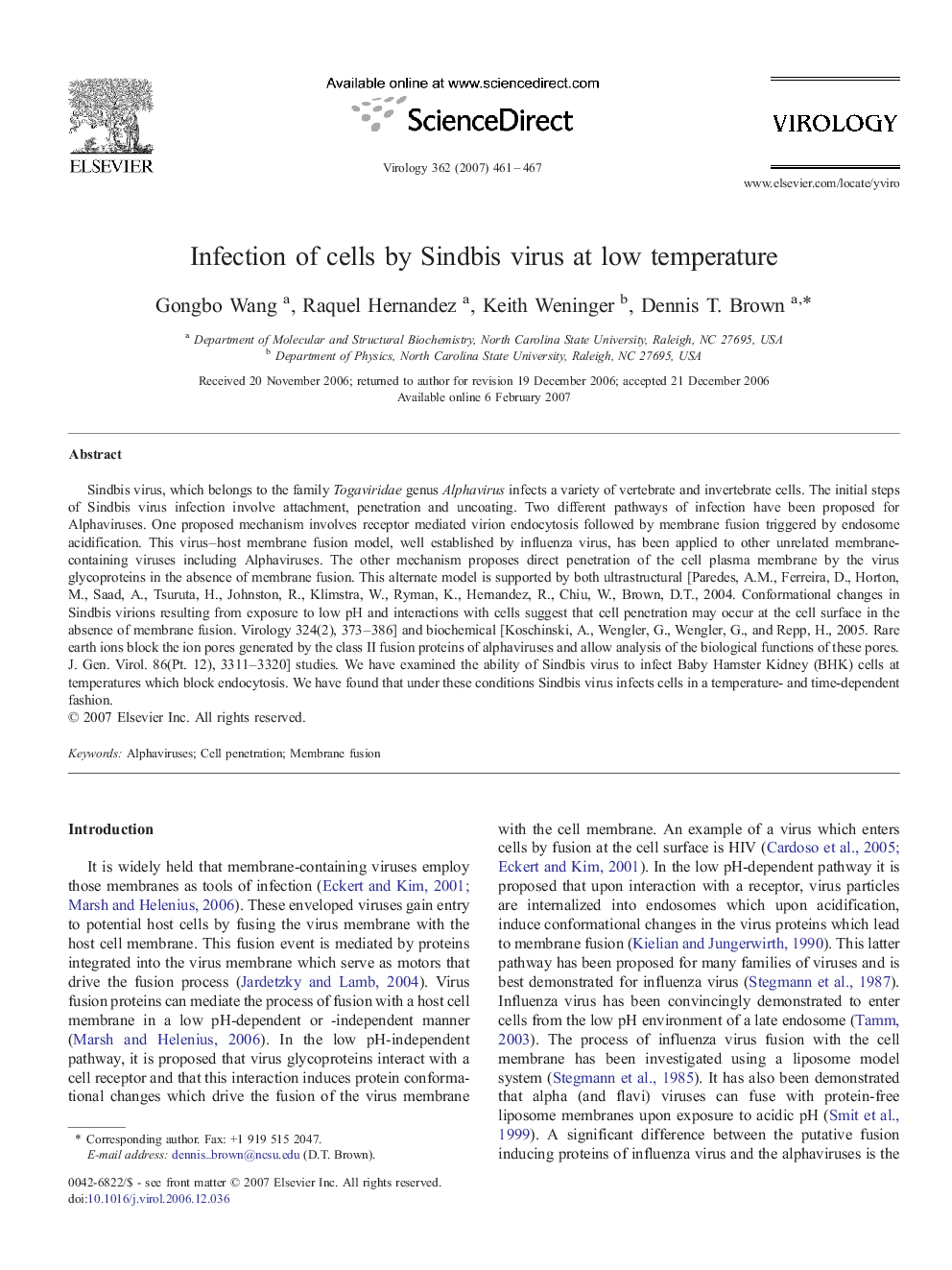| Article ID | Journal | Published Year | Pages | File Type |
|---|---|---|---|---|
| 3426365 | Virology | 2007 | 7 Pages |
Sindbis virus, which belongs to the family Togaviridae genus Alphavirus infects a variety of vertebrate and invertebrate cells. The initial steps of Sindbis virus infection involve attachment, penetration and uncoating. Two different pathways of infection have been proposed for Alphaviruses. One proposed mechanism involves receptor mediated virion endocytosis followed by membrane fusion triggered by endosome acidification. This virus–host membrane fusion model, well established by influenza virus, has been applied to other unrelated membrane-containing viruses including Alphaviruses. The other mechanism proposes direct penetration of the cell plasma membrane by the virus glycoproteins in the absence of membrane fusion. This alternate model is supported by both ultrastructural [Paredes, A.M., Ferreira, D., Horton, M., Saad, A., Tsuruta, H., Johnston, R., Klimstra, W., Ryman, K., Hernandez, R., Chiu, W., Brown, D.T., 2004. Conformational changes in Sindbis virions resulting from exposure to low pH and interactions with cells suggest that cell penetration may occur at the cell surface in the absence of membrane fusion. Virology 324(2), 373–386] and biochemical [Koschinski, A., Wengler, G., Wengler, G., and Repp, H., 2005. Rare earth ions block the ion pores generated by the class II fusion proteins of alphaviruses and allow analysis of the biological functions of these pores. J. Gen. Virol. 86(Pt. 12), 3311–3320] studies. We have examined the ability of Sindbis virus to infect Baby Hamster Kidney (BHK) cells at temperatures which block endocytosis. We have found that under these conditions Sindbis virus infects cells in a temperature- and time-dependent fashion.
